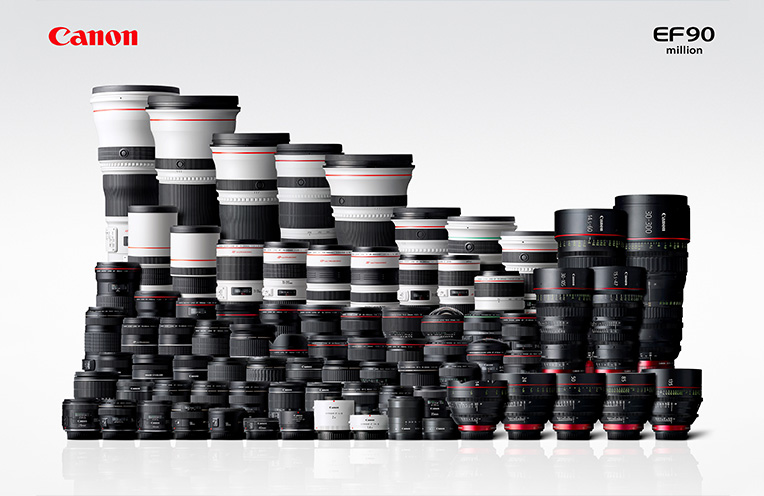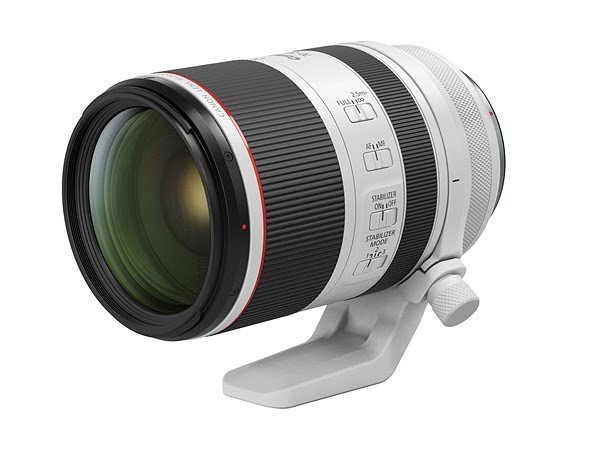Canon EOS RP, from their Website.
Yesterday, Canon announced its lightest and least expensive full-frame camera, the Canon EOS RP. Canon’s latest mirrorless camera offers a wide-range of features, including a 26.2 Megapixel CMOS sensor, for around $1,300. This price point for a full frame camera is nothing short of incredible. While $1,300 for a camera seems like overkill to most people, to anyone who’s interested in taking essentially professional-level images, this price is a bargain. So, is the Canon RP a viable camera option? Would it be a worthwhile upgrade?
Baby Rhinoceros, 2018.
Before jumping to conclusions, let me provide some background on how I prefer to shoot, as that heavily influences my impressions of the Canon RP. Firstly, I travel with my camera frequently. Having a camera system that is small and lightweight is of the utmost importance to me. There’s nothing fun about hauling around a large DSLR and a few lenses. I put up with the pain and bulk because that’s what I need to take the best photos. Second, I often shoot a wide variety of subject matter. Although I often prefer landscape and wildlife photography, when I travel to a city or want to step outside of my comfort zone I enjoy taking street/general travel photography. Thus, I’m interested in a system that can accommodate all my interests, although I tend to lean towards tools better suited for nature. Finally, while I enjoy taking videos, it’s not the most important aspect of a camera to me. If I want to shoot a movie, I’d need a dedicated movie camera and lenses—there’s simply no comparison for a camera and lens system that was designed solely with making films in mind. Therefore, when I’m evaluating a camera’s video specs, I always keep in mind that I’m never going to make professional-quality videos on a generic (“still”) camera. Better video quality and features are simply a bonus, but never a real deal-breaker.
With that in mind, where does the Canon EOS RP stand? Given the $1,300 price-point, the Canon EOS RP is an amazing camera. That price puts it between Canon’s flagship “prosumer” camera, the Canon 80D ($1,000) and Canon’s entry-level full-frame DSLR, the Canon 6D Mark II ($1,500). In many ways, the Canon EOS RP seems like the love-child of the 80D and the 6D Mk II—it offers the resolution and sensor-size of the 6D (and some of the customization) but in a package more comparable to the 80D. If you’re deciding which camera to buy, you really can’t get a better camera without spending at least $1,000 more. The fact that the EOS RP packs a full-frame sensor means that you’re going to get incredible image quality—better than the 80D and comparable to the 6D Mk II. For anyone interested in shooting landscapes, the full-frame sensor also has the added benefit of offering a wider field-of-view compared to a crop-sensor camera.
The other exciting facet of the Canon EOS RP is its size. Having traveled all over the world with a bulky DSLR, my biggest complaint is always the weight. It’s never fun to schlep a bunch of camera equipment around, especially as airlines tighten restrictions on how big your bag can be and how much it can weigh. The Canon EOS RP weighs in at 440 grams, or just under one pound. That makes it a pound lighter than the 6D Mk II and half-a-pound lighter than the Canon 80D. In short, the Canon EOS RP weighs as much as your standard Canon Rebel camera. When you’re walking around all day carrying your camera, that half-pound to one-pound difference adds up. If you’re someone who uses the neck strap, your neck will thank you for the lighter camera. Likewise, the Canon EOS RP has smaller dimensions than either the Canon 80D or the Canon 6D Mk II. Indeed, the Canon RP is about as small a full-frame camera as you could find. This means less space occupied in your bag and more space for accessories or other lenses.
All those lenses add up. From Canon’s website.
Yet, as tiny as the Canon EOS RP is, I can’t help but wonder if one would even notice the weight/size savings. That is, although you might reduce the dimensions of your camera body, switching to the Canon EOS RP does nothing to change the weight of your lenses. The camera body is just one piece of the photography puzzle. In practice, will you notice any difference in carry-weight by purchasing a camera that’s a pound or fewer lighter? If you’ve got a handful of lenses and your camera bag weighs in around ten or twelve pounds, the weight difference is negligible.
To make matters worse, Canon’s current lineup of RF lenses (the lenses that are designed for their new mirrorless system), look even bulkier than their EF predecessors. Thus, if you’re into travel photography and you already own a camera, switching to the Canon EOS RP might not make sense.
The one ray of hope might be Canon’s recently announced RF 70-200 f/2.8 lens. In contrast to the current EF 70-200 lenses, the new RF lens is significantly smaller. If Canon continues this pattern and makes their RF lenses smaller than their EF counterparts, then switching to Canon EOS RP for travel might make sense. Until the lenses get smaller, however, spending the extra money for the mirrorless body doesn’t seem justified.
The other major drawback to the Canon EOS RP is that it’s entirely ill-suited for wildlife (or other action) photography. The Canon EOS RP boasts an impressively abysmal five frames-per-second (fps) frame rate. For comparison, both the 80D and the 6D Mk II shoot around seven frames-per-second. That difference might seem minor, but when you’re shooting a moving subject, those additional frames might be the difference between getting the shot or missing the opportunity. To make matters worse, the Canon RP only offers 5 fps shooting when you’re using one-point autofocus. For those unfamiliar with Canon’s autofocus system, one-point autofocus means that your camera automatically focuses in a single spot within the frame each time you press your autofocus button. If your subject moves from that autofocus point while you’re taking the shot then you’re out of luck. By contrast, Canon AF-Servo mode follows subjects as they move, making AF-Servo the autofocus mode of choice for wildlife photography. With the Canon RP, if you’re using AF-Servo mode then the effective frame rate drops to 3-4 fps. A Canon Rebel T7, the cheapest DSLR Canon makes, also has a 3 fps maximum.
A lot of the complaints with the Canon EOS RP center around its video features, or lack thereof. Canon EOS RP appears to not offer 24 fps video recording at 1080p resolution, which has ruffled a lot of feathers with the video (Youtube) crowd. The reason is that many prefer shooting video at 24 fps for its more “cinematic” look; Hollywood shoots at 24 fps, so we should too. The Canon EOS RP does offer 24 fps video at 4K, a higher resolution than 1080p. However, the video crowd dislikes the Canon RP’s 4K capabilities because the camera crops into a subsection of the sensor when shooting 4K. This means that, while you have this nice full-frame sensor, if you shoot 4K then you’ll only be able to use a portion of the sensor— offering lower-video quality than theoretically possible. These are definite downsides for the Canon EOS RP, but again, not enough for me to consider it a deal-breaker. If high-quality video is your primary concern, consider the Black Magic Cinema Camera, which is comparable in price.
Based on what Canon released regarding the Canon EOS RP, it appears to be a tremendous amount of camera for an extremely affordable price. For anyone interested in still photography, it’s almost a no-brainer—a smaller, more advanced 6D Mk II for less money. If you’re looking for your first serious camera, it would make more sense to jump into the RF system—the future of Canon’s camera lineup—with the Canon EOS RP. Likewise, for anyone interested in landscape work or wanting a full-frame sensor, it seems hard to beat. If, however, you already own a camera and are looking to cut weight for travel or shoot wildlife, then perhaps holding off for later Canon models makes more sense. Alternatively, if shooting video is your primary concern, you’re out of luck with the EOS RP. As a final note, that Canon offers a full-frame camera at such a cheap price, with a lot of “pro” features, I think is encouraging for the future of Canon and their foray into mirrorless cameras.




